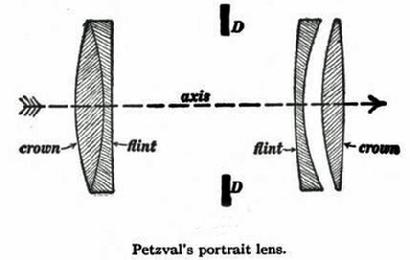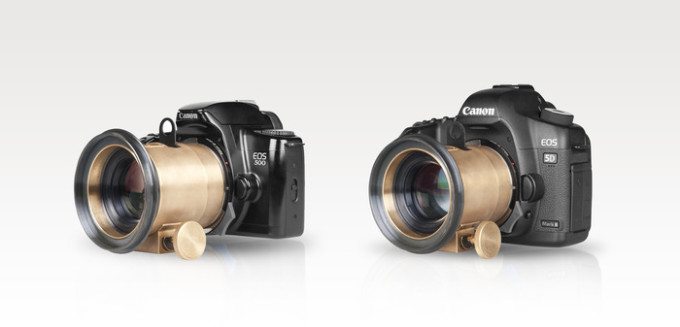Last Updated on 07/25/2013 by Chris Gampat
In the early days of photography (think 19th century), there wasn’t a whole lot of options with regard to cameras and lenses. There was no Canon or Nikon or Leica or Olympus or Pentax and definitely no Sony, pickings were slim. Charles Chevalier had developed one of the first lenses for the original Daguerre & Giroux camera of 1839; despite being one of the first, it had some glaring issues, such as an overall lack of sharpness, and pitiful maximum aperture of f15, which caused exposures to quite long. Obviously, someone had to come up with a better solution; enter Joseph Petzval.
 Petzval, being a Professor of Mathematics (ergo, smarter than the average fellow), knew there had to be a better way to capture light through the use of a camera. He developed his own type of doublet lens which was very sharp in the center, but due to field curvature, the plane of focus would fall off quite sharply; this look was ideally suited for portraiture, and as such it became the standard lens for portrait photographers. This lens design boosted the maximum available aperture to a very respectable f3.5 (bear in mind, these were large format cameras). At about 4-5 stops brighter than the original Chevalier lenses it was now possible to photograph at far more “reasonable” exposure times of about 30 seconds, instead of the previous minimum of 10 minutes. The truly amazing part, in my opinion, is that this development arrived only one year after the release of Chevalier’s optics.
Petzval, being a Professor of Mathematics (ergo, smarter than the average fellow), knew there had to be a better way to capture light through the use of a camera. He developed his own type of doublet lens which was very sharp in the center, but due to field curvature, the plane of focus would fall off quite sharply; this look was ideally suited for portraiture, and as such it became the standard lens for portrait photographers. This lens design boosted the maximum available aperture to a very respectable f3.5 (bear in mind, these were large format cameras). At about 4-5 stops brighter than the original Chevalier lenses it was now possible to photograph at far more “reasonable” exposure times of about 30 seconds, instead of the previous minimum of 10 minutes. The truly amazing part, in my opinion, is that this development arrived only one year after the release of Chevalier’s optics.
(fun fact: Voigtlander was the first company to distribute the Petzval lens design.)
So then, what is a Petzval lens?

Once the design was first manufactured, it was not protected by any sort of patent so it was quickly copied by multiple companies. Despite this, it typically retained the name “Petzval Portrait Lens”. The barrels of the lenses are made of brass, and you would often find two groups of doublet lenses with a gap in-between for the aperture. Due to the design of the elements, a very noticeable field curvature was present in the images captured with one of these lenses, however they were quite sharp in the center, which proved to be a better compromise than Chevalier’s options.  Despite these inherent “defects” in the design of the lens, photographers learned to compensate by placing their subjects within the central part of the frame that would have the sharpest focus, the falloff would lead to vignetting on the sides of the frame, but this ultimately would draw your eyes to the sharpest and brightest part of the frame which would fortunately be the subject.
Despite these inherent “defects” in the design of the lens, photographers learned to compensate by placing their subjects within the central part of the frame that would have the sharpest focus, the falloff would lead to vignetting on the sides of the frame, but this ultimately would draw your eyes to the sharpest and brightest part of the frame which would fortunately be the subject.
Where can I see more examples you ask?
Well fortunately for you, there is a reasonably active Flickr group dedicated to utilizing Petzval lenses. The neat thing is that these are modern images created recently taking advantage of ages-old photographic processes. Check out the group here: Flickr. Additionally, the crazy minds at Lomography have taken it upon themselves to thoroughly modernize the Petzval lens design for todays digital and film SLR cameras. If you’ve read our other post (Lomography Announces Petzval Lens Kickstarter), and with that, we are going to see this style of lens be more accessible to people than ever before.
Please Support The Phoblographer
We love to bring you guys the latest and greatest news and gear related stuff. However, we can’t keep doing that unless we have your continued support. If you would like to purchase any of the items mentioned, please do so by clicking our links first and then purchasing the items as we then get a small portion of the sale to help run the website. Also, please follow us on Facebook, Flickr and Twitter.



